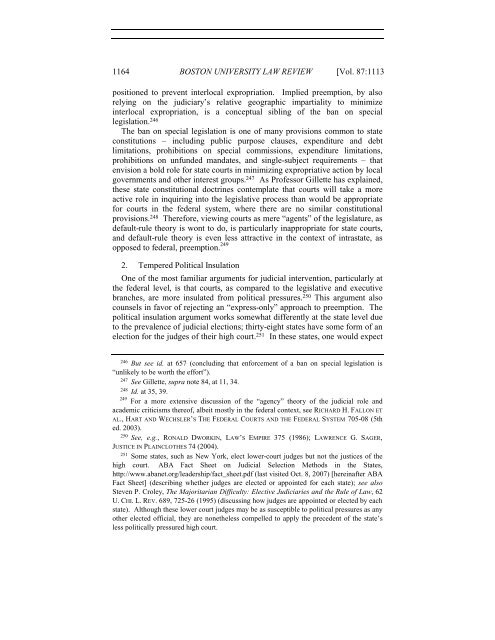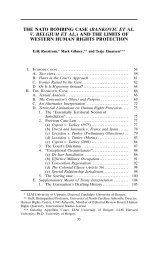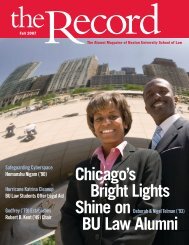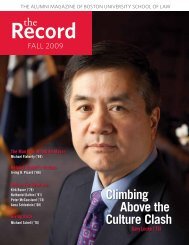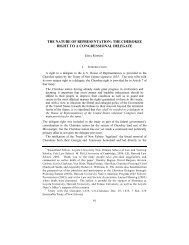INTRASTATE PREEMPTION
INTRASTATE PREEMPTION
INTRASTATE PREEMPTION
- No tags were found...
Create successful ePaper yourself
Turn your PDF publications into a flip-book with our unique Google optimized e-Paper software.
1164 BOSTON UNIVERSITY LAW REVIEW [Vol. 87:1113positioned to prevent interlocal expropriation. Implied preemption, by alsorelying on the judiciary’s relative geographic impartiality to minimizeinterlocal expropriation, is a conceptual sibling of the ban on speciallegislation. 246The ban on special legislation is one of many provisions common to stateconstitutions – including public purpose clauses, expenditure and debtlimitations, prohibitions on special commissions, expenditure limitations,prohibitions on unfunded mandates, and single-subject requirements – thatenvision a bold role for state courts in minimizing expropriative action by localgovernments and other interest groups. 247 As Professor Gillette has explained,these state constitutional doctrines contemplate that courts will take a moreactive role in inquiring into the legislative process than would be appropriatefor courts in the federal system, where there are no similar constitutionalprovisions. 248 Therefore, viewing courts as mere “agents” of the legislature, asdefault-rule theory is wont to do, is particularly inappropriate for state courts,and default-rule theory is even less attractive in the context of intrastate, asopposed to federal, preemption. 2492. Tempered Political InsulationOne of the most familiar arguments for judicial intervention, particularly atthe federal level, is that courts, as compared to the legislative and executivebranches, are more insulated from political pressures. 250 This argument alsocounsels in favor of rejecting an “express-only” approach to preemption. Thepolitical insulation argument works somewhat differently at the state level dueto the prevalence of judicial elections; thirty-eight states have some form of anelection for the judges of their high court. 251 In these states, one would expect246 But see id. at 657 (concluding that enforcement of a ban on special legislation is“unlikely to be worth the effort”).247 See Gillette, supra note 84, at 11, 34.248 Id. at 35, 39.249 For a more extensive discussion of the “agency” theory of the judicial role andacademic criticisms thereof, albeit mostly in the federal context, see RICHARD H. FALLON ETAL., HART AND WECHSLER’S THE FEDERAL COURTS AND THE FEDERAL SYSTEM 705-08 (5thed. 2003).250 See, e.g., RONALD DWORKIN, LAW’S EMPIRE 375 (1986); LAWRENCE G. SAGER,JUSTICE IN PLAINCLOTHES 74 (2004).251 Some states, such as New York, elect lower-court judges but not the justices of thehigh court. ABA Fact Sheet on Judicial Selection Methods in the States,http://www.abanet.org/leadership/fact_sheet.pdf (last visited Oct. 8, 2007) [hereinafter ABAFact Sheet] (describing whether judges are elected or appointed for each state); see alsoSteven P. Croley, The Majoritarian Difficulty: Elective Judiciaries and the Rule of Law, 62U. CHI. L. REV. 689, 725-26 (1995) (discussing how judges are appointed or elected by eachstate). Although these lower court judges may be as susceptible to political pressures as anyother elected official, they are nonetheless compelled to apply the precedent of the state’sless politically pressured high court.


